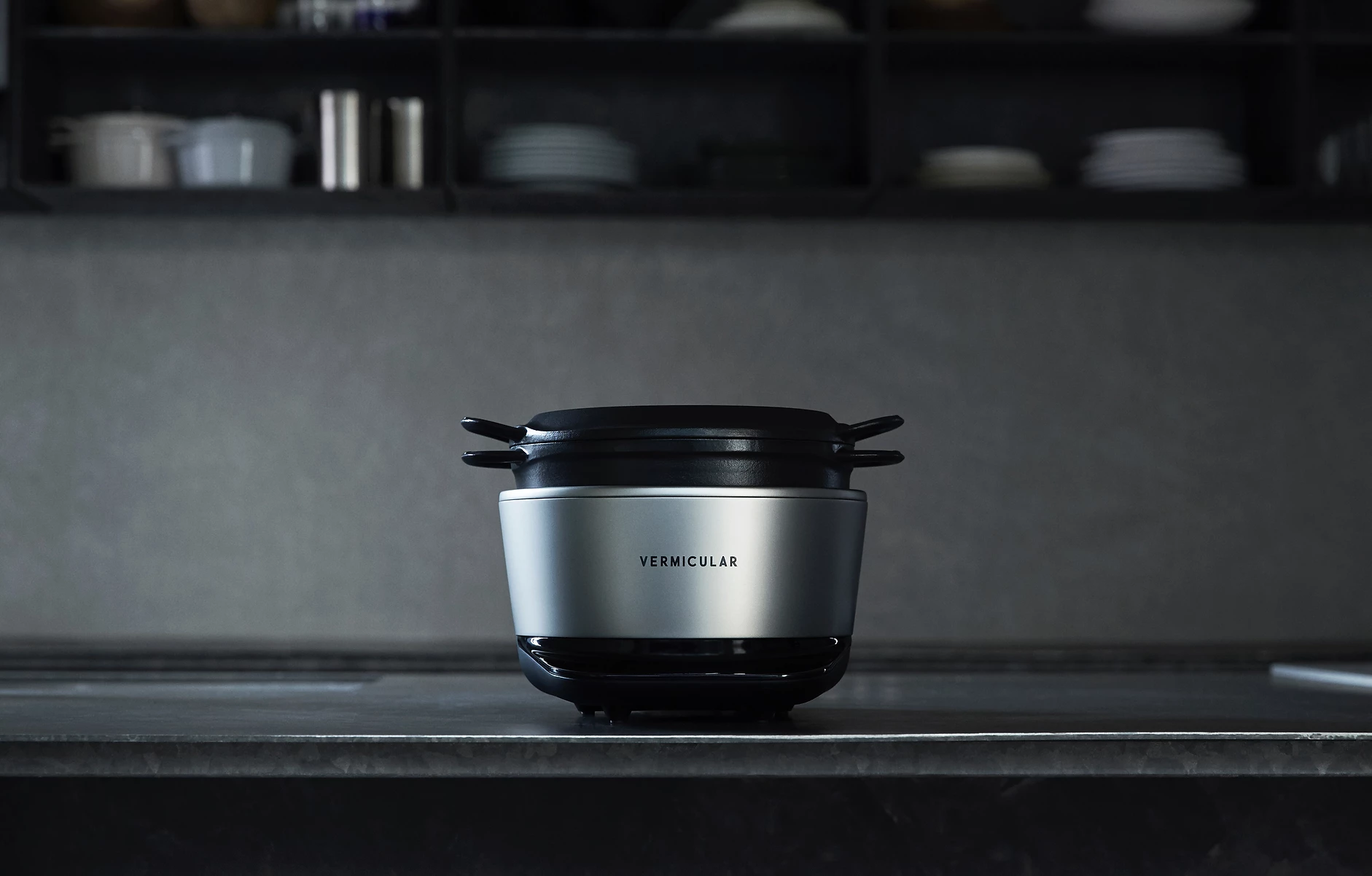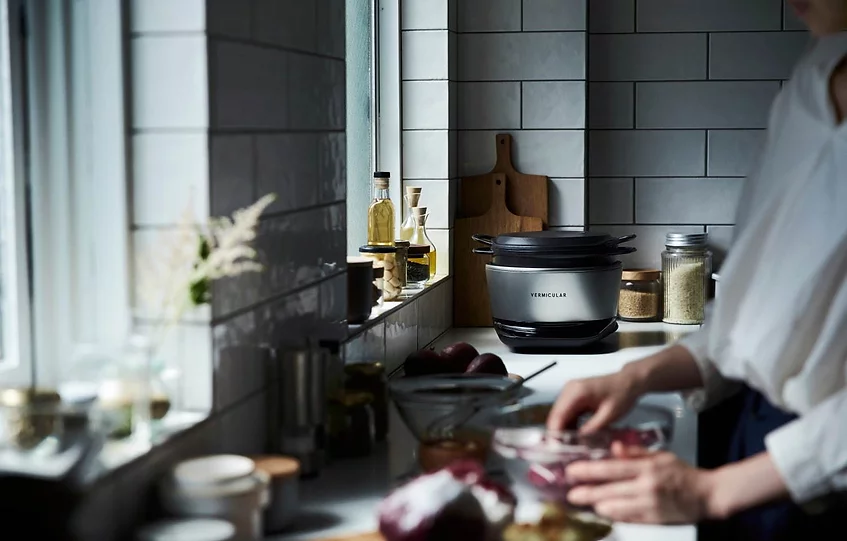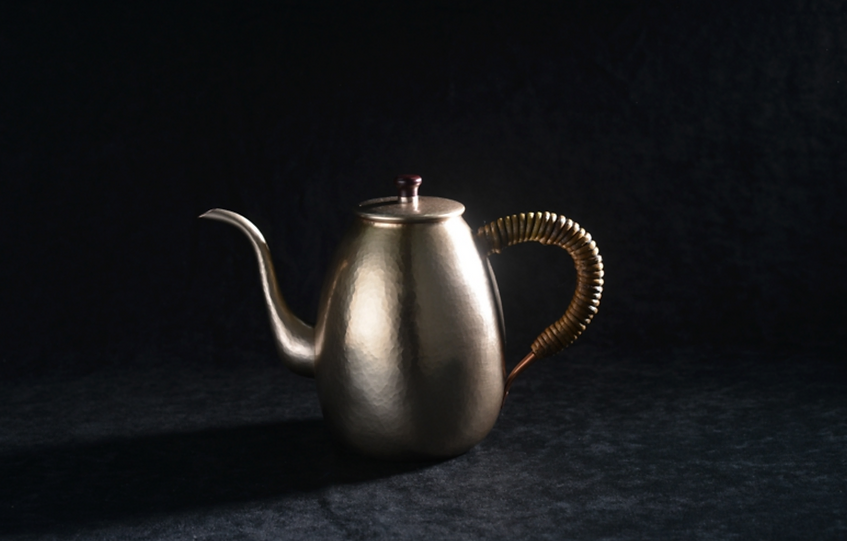
Site: Uji | Kyoto, Japan
Sacred fire
Along the east bank of Kyoto’s Uji River, a fire’s been burning for 400 years. Its flames are kindled by Asahiyaki, one of Japan’s great houses of pottery and tea ceremony utensils. Sixteen generations on, Hosai Matsubayashi (Matsubayashi XVI) is the latest to stand on his many ancestors’ shoulders. It is his turn—indeed his destiny—to interpret, shape, and evolve Asahiyaki’s essence, tending the family flames through the next generation.
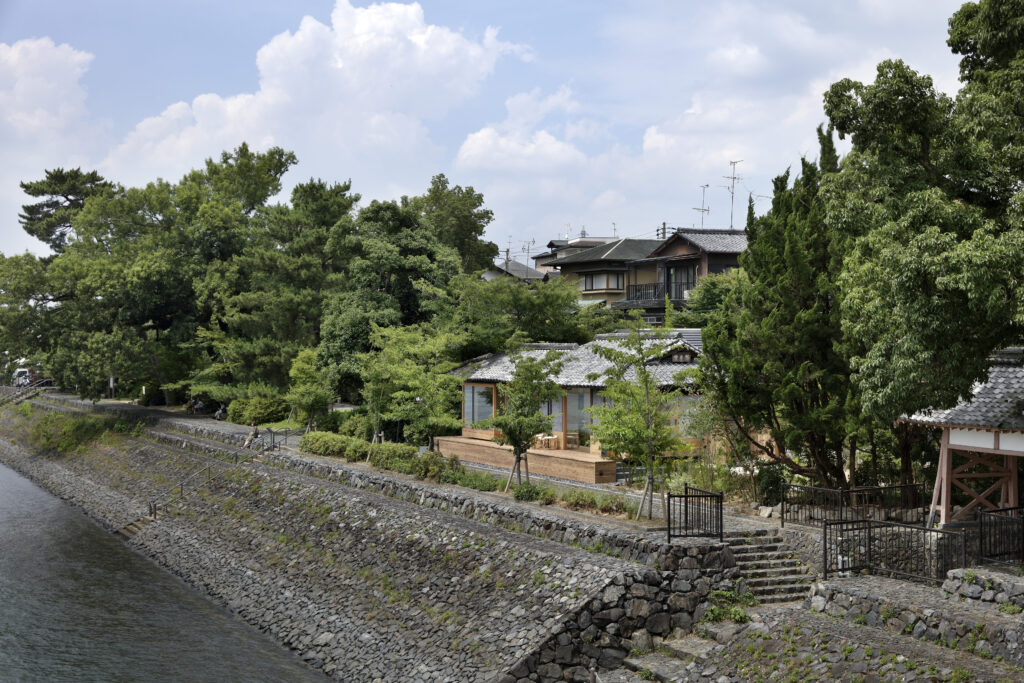
Four centuries of continuity is remarkable enough. But, while sheer longevity is undoubtedly noteworthy, Asahiyaki, or Asahi ware, stands out from traditional Japanese ceramics in other ways.
First, the underside of Asahi ware bears the imprinted mark of “Asahi” (朝日). Stamping pottery with kanji characters can be seen as an elegant touch of commonsense branding from today’s vantage point, but that practice dates back to the kiln’s origins when such engraving was not ordinary. Second, Asahiyaki uses two different kilns, each with its own purpose: The primary gas-powered kiln is standard fare among potters everywhere. It is used year-round, allowing for consistent, predictable results enabled by precise temperature control. The second kiln is special. It is unusually long, rests on a slope, and is known as the “climbing kiln” or noborigama. On the occasion of its use (up to three times a year), it is fired for three days straight. The flames in this wood-fired kiln are massive and engulf the pottery at peak temperatures above 1,400℃.

Feeding the kiln’s flames
In terms of results, the climbing kiln’s benefits and costs are the same: sheer unpredictability. What can be expected, however, is that prolonged immolation will destroy most of the pottery. Only a small percentage survive each firing, and of that percentage, some are likely to turn out exceptionally beautiful.
And therein lies the magic of this particular kiln, upon which Princess Mikasa bestowed the name Genyo (a word that means splendid or profound). It makes possible truly singular glazes but exacts a high cost as the failure rate is higher than 50%. For those reasons, and because of the otherworldly powers Genyo seems to possess, each firing of the kiln galvanizes everyone present to stand before it and offer a prayer as one would at a shrine.
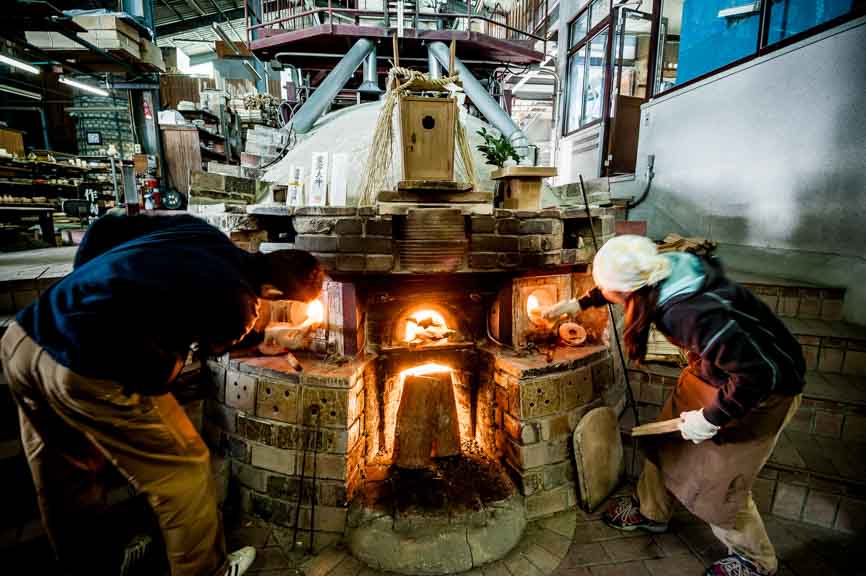
With so many handmade ceramic works—well over a thousand pieces, with hundreds among them made by Matsubayashi himself—entering the noborigama as sacrificial pieces, a layperson could see this climbing kiln as one long, oddly shaped caution against inefficient business practices. Its use incurs an enormous cost, materially and otherwise. Without knowing which pieces will survive a continuous three-day firing, one must be financially, psychologically, and emotionally prepared to lose a significant investment of time and resources to Genyo. However, understanding such losses in quantifiable terms figures into our cold world of balance sheets. For Asahiyaki, such concerns are trivial when the goal is to honor one’s craft and aim for as close to artistic perfection as possible. Such an orientation to the world gives rise to yet another quality of Asahiyaki—the philosophy of kirei-sabi.

Embracing the beautiful craft
Japan’s towering aesthetic concept is wabi-sabi, an idea that conceives of imperfection and incompleteness as that from which beauty emerges. On the other hand, Asahiyaki’s guiding principle of kirei-sabi is a unifying concept of simplicity and elegant beauty that differs from wabi-sabi in that the former recognizes beauty as something we can perceive directly, without much contemplation.
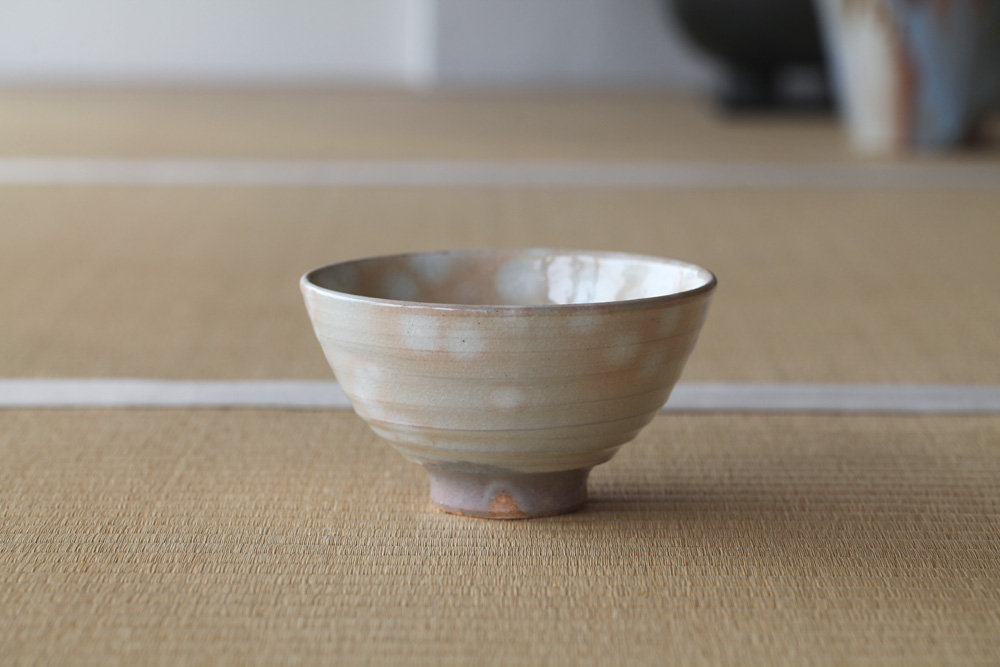
A work of art epitomizing wabi-sabi might appear to be missing something, which can cause ambiguous feelings in the viewer. Kirei-sabi, on the other hand, does not necessarily aim to resolve that tension, but it certainly reduces it. Although beauty is subjective, gazing upon Asahi ware or one of Matsubayashi’s works leaves little doubt about itself as a complete, aesthetically pleasing object.
Asahiyaki flirts with the “incomplete” in another way. Over time, the shape of their wares changes subtly from regular use. Tea ceremony practitioners call it nare ga kuru or “habituation to the hand.” For this reason, Asahiyaki is considered 80% complete when it leaves the kiln; the remaining 20% occurs in its owner’s possession. The reason for this depends on the quality of the local soil.
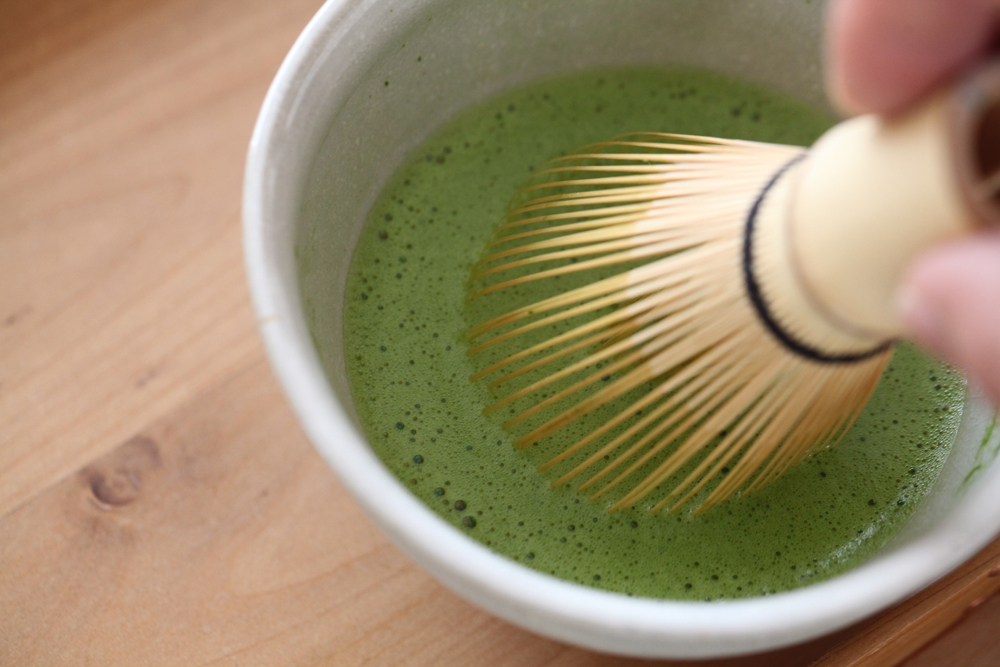
The soil adjacent to the Uji River is very soft, so it must be aged 50 to 100 years to be used in Asahi ware. Allowing soil to rest for the better part of a century reveals just how much is required by the previous generations’ stewardship to produce Asahi ware today, as the 14th-generation Matsubayashi was responsible for gathering much of the earth used by his grandson.* Each generation’s success is due in part to the investments made by previous generations, just as the future of Asahiyaki depends on preparations made today.
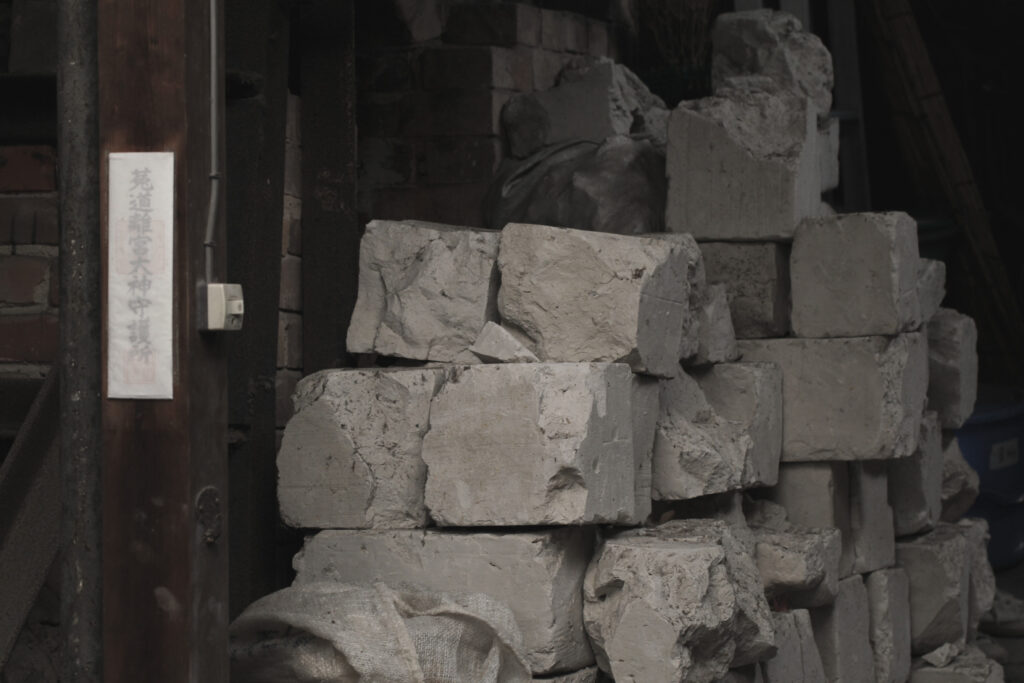
Everything is interconnected
Uji is intimately connected to the history of Japanese tea—it is a nucleus of tea production, and Asahiyaki was born by making ceramic tea bowls for matcha. In terms of Uji and pottery, there are regions in Japan (such as Iga) where several families operate kilns whose pottery bears the name of that region (esteemed Igayaki pottery). Asahiyaki is different. The Matsubayashi family is Asahiyaki, and only they are permitted to use soil from the Uji River in their wares. In other words, Asahiyaki is Uji River pottery, and Uji River pottery is Matsubayashi.
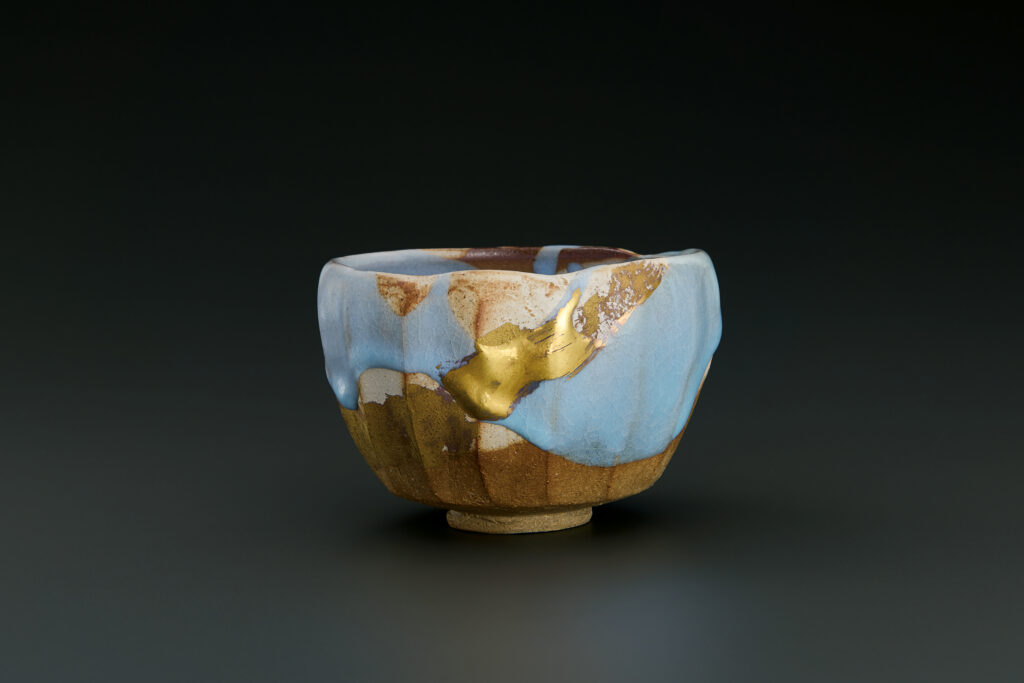
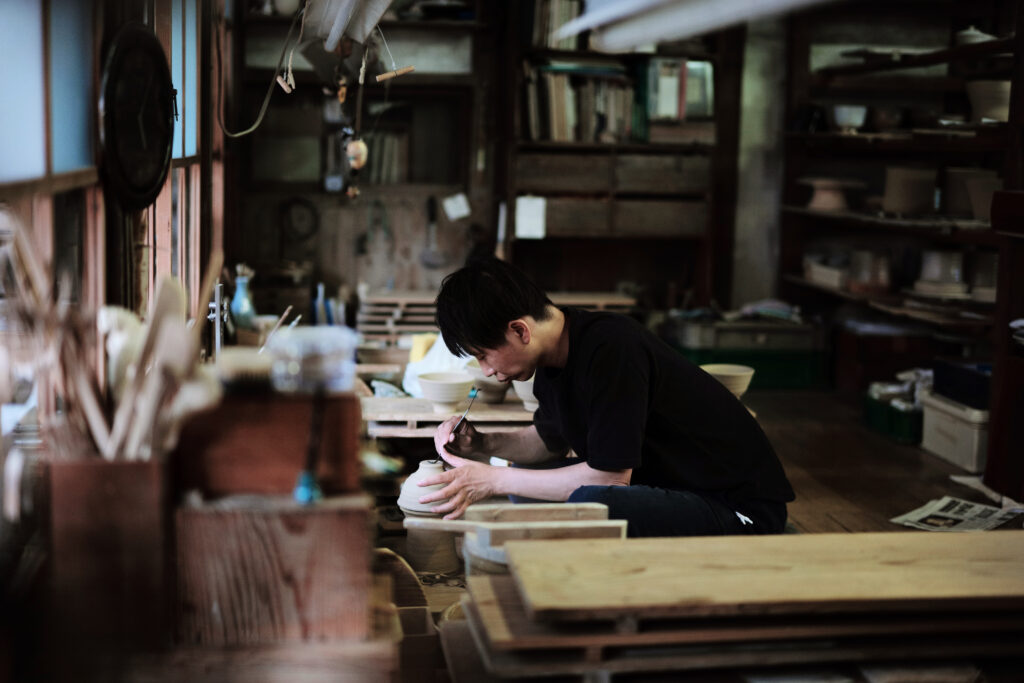
However, a centuries-long existence in business of any kind guarantees periods of uncertainty. For example, during a particularly challenging period, the Asahiyaki kiln made kawara (Japan’s recognizable ceramic roof tiles). At other times, they made porcelain pots and cups for sencha (Japanese tea prepared by steeping whole tea leaves in hot water, which differs from matcha, a powdered Japanese green tea mixed with hot water). That foray yielded surprisingly positive results, as porcelain ware became a feature of their product line.
Today, tea culture in Japan radically differs from what it once was. Young Japanese people generally don’t care about tea, and bottled teas are conveniently ever-present (you no longer need a pot and cup for tea). Facing a new period of relative uncertainty, Matsubayashi XVI leverages his role in traditional arts and crafts to derive sustainable, fresh perspectives. He is a member of project GO ON, an organization run by craftspeople. They are keenly aware that their traditions can only survive by paying close attention to the cultural pulse of the world around them.
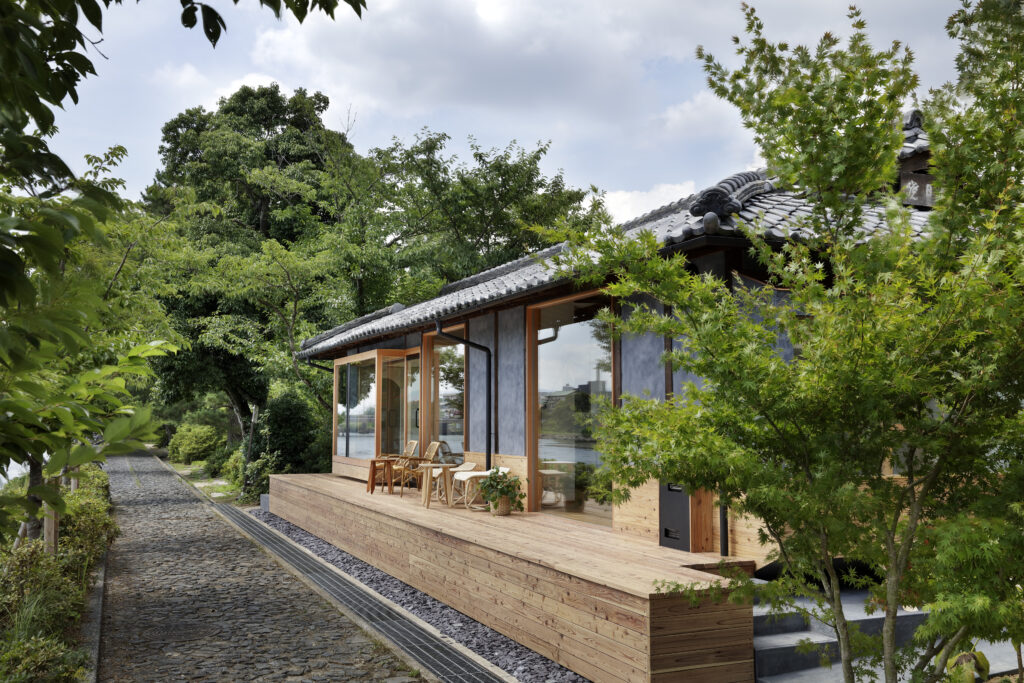
In Uji, the Asahiyaki shop and gallery showcases wares ranging from tea bowls, cups with and without saucers, mugs, teapots, and small flower vases. A unique, limited selection of pottery made by Matsubayashi’s hands is also available. Beyond the wares on display, the shop itself is worth a trip.
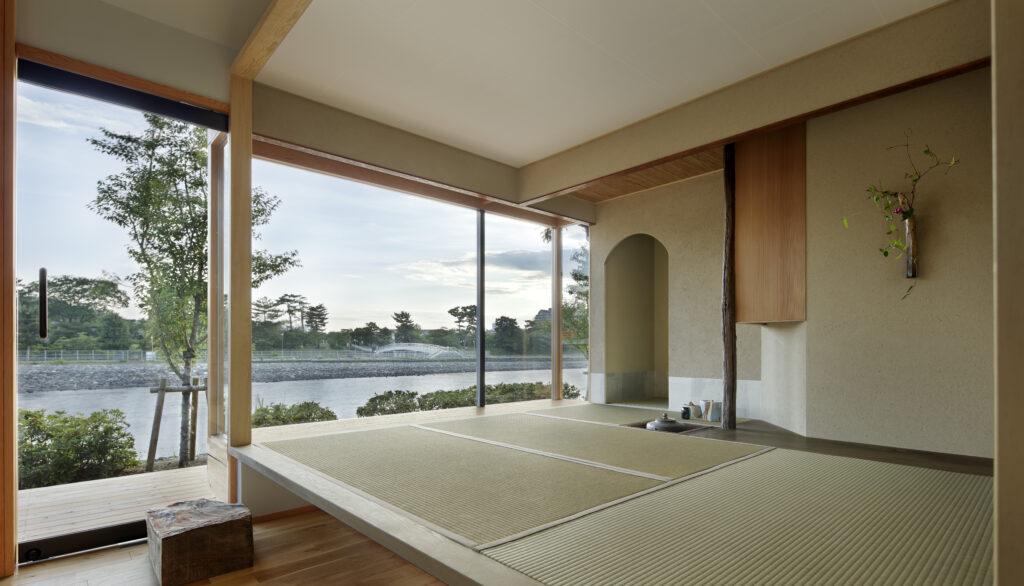


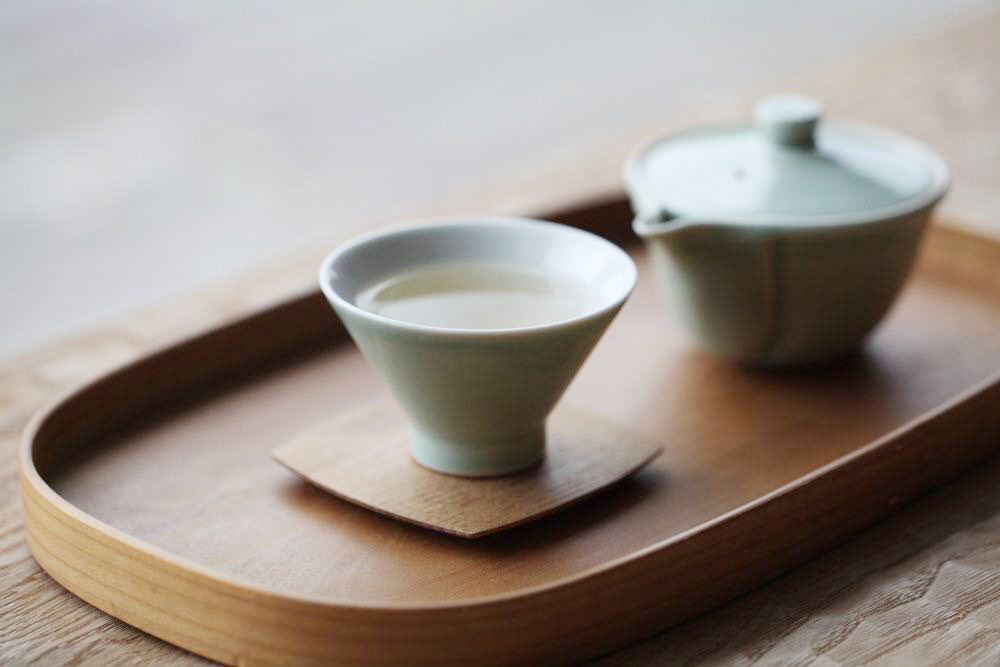
The Asahiyaki gallery, perched on the bank of the Uji River, is a new project created to showcase wares and provide experiences for the public. It is an elegantly designed space created with abundant care and intention. Enter and feel instantly relaxed by river-facing floor-to-ceiling windows and omnipresent natural materials, from the floors to the exposed wooden beams. And have a cup of tea! Visitors can also enter the kiln and participate in a craftsman-led workshop. Located just outside the city center, Asahiyaki is not to be missed.
*There are no rules about having a male heir per se, as in some traditional arts. It is merely coincidence that 16 Matsubayashis have been male.
Contact us for further inquiries, recommendations, and more information about your travel plans throughout Japan.
